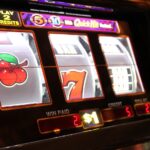
Art, in its myriad forms, has always held a profound influence over the human spirit. From ancient cave paintings to modern digital creations, art has served as a timeless expression of our thoughts, emotions, and aspirations. It is a medium that transcends boundaries, cultures, and languages, speaking to the very essence of our shared humanity. In this article, we delve into the unique power of art and its ability to transform individuals and societies.
Art has an innate ability to evoke emotions and provoke contemplation. It captures the essence of the human experience, allowing us to reflect upon our joys, sorrows, hopes, and fears. Through the stroke of a brush, the chisel on stone, or the rhythm of a musical composition, artists create a visual, tactile, or auditory language that resonates deeply within us. This resonance has the power to elicit empathy, compassion, and understanding, fostering a sense of interconnectedness among diverse individuals.
Moreover, art has the potential to challenge societal norms, question established paradigms, and push boundaries. Throughout history, artists have often been the vanguards of social change, using their creations as vehicles for dissent and revolution. From Picasso’s Guernica, a stark depiction of the horrors of war, to Banksy’s thought-provoking street art, art has the power to provoke dialogue, challenge perceptions, and inspire action. By pushing the boundaries of what is considered acceptable or conventional, artists pave the way for progress and societal transformation.
Art also serves as a conduit for personal growth and self-expression. It allows individuals to tap into their innermost thoughts, emotions, and experiences, enabling a deeper understanding of oneself. Whether it be through painting, sculpture, dance, or poetry, art provides a platform for self-reflection and introspection. By engaging in the creative process, individuals can explore their own identities, confront their fears, and discover new facets of their being. In this way, art becomes a powerful tool for personal transformation and self-empowerment.
Beyond the individual level, art has the potential to shape the collective consciousness of a society. It acts as a mirror, reflecting the values, beliefs, and aspirations of a community. Artistic endeavors, such as public installations or community projects, have the ability to foster a sense of belonging, pride, and shared heritage. They can become catalysts for social cohesion, fostering a sense of community and encouraging dialogue across diverse groups. In this sense, art becomes a bridge, connecting people and fostering a sense of unity and common purpose.
In the digital age, art has taken on new dimensions, embracing technology and expanding its reach. The internet and social media platforms have democratized artistic expression, allowing artists from all corners of the globe to share their creations with a global audience. Online galleries, virtual reality experiences, and digital installations have opened new frontiers for artistic exploration. The fusion of art and technology has the potential to revolutionize the way we experience and engage with creative expressions, making art more accessible and inclusive than ever before.
In conclusion, art is a remarkable force that has the power to transform individuals and societies alike. It stimulates our senses, provokes our thoughts, and touches our souls. Through its ability to evoke emotions, challenge societal norms, and foster personal growth, art transcends boundaries and connects us in profound ways. As we continue to explore the vast landscape of artistic expression, let us embrace the transformative power of art and harness it for the betterment of ourselves and our world.












